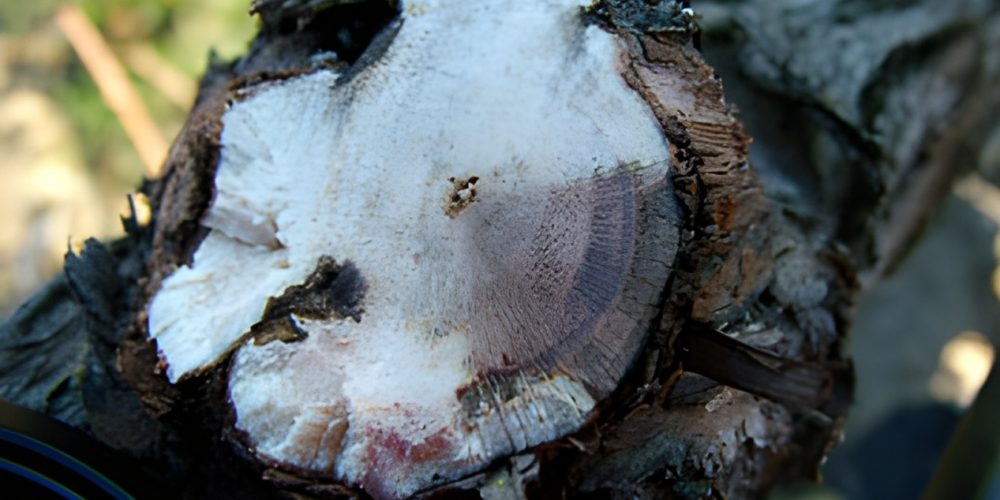Table of contents of the article
ToggleDieback on grapes represents a real threat to growers, as it causes gradual deterioration of plants. In this article on your website, WORLD OF PLANTS, we will discuss the causes of this disease and ways to combat it.
Symptoms of dieback on grapes
- Scientific name : Eutypa dlebaek of grapevine
- Type of disease : Innate
- The causative fungus : Eutypa lata C.Tul
- Symptoms of the disease usually do not appear until the varicose veins are at least six years old.
- Symptoms are clearly visible on parcels from mid-spring until the end, when the length of healthy shoots is 20-40 cm. Severely infected shoots produce a small number of parcels that appear stunted, with small, pale, distorted leaves. These leaves then become necrotic and torn during the season. .
- Symptoms usually appear on one arm or on part of the deltoid, and arms with stunted growths usually die in the following year.
- The distribution of the infestation in the tree is usually random, but the infestation can be seen in the form of expanding foci of infected varicose veins in old vines.
- The main symptom that distinguishes this disease is the presence of dead tissue that is brown in color and hard to the touch inside the wood, taking the shape of a “V” and can be seen when making a cross-section of the affected branches.
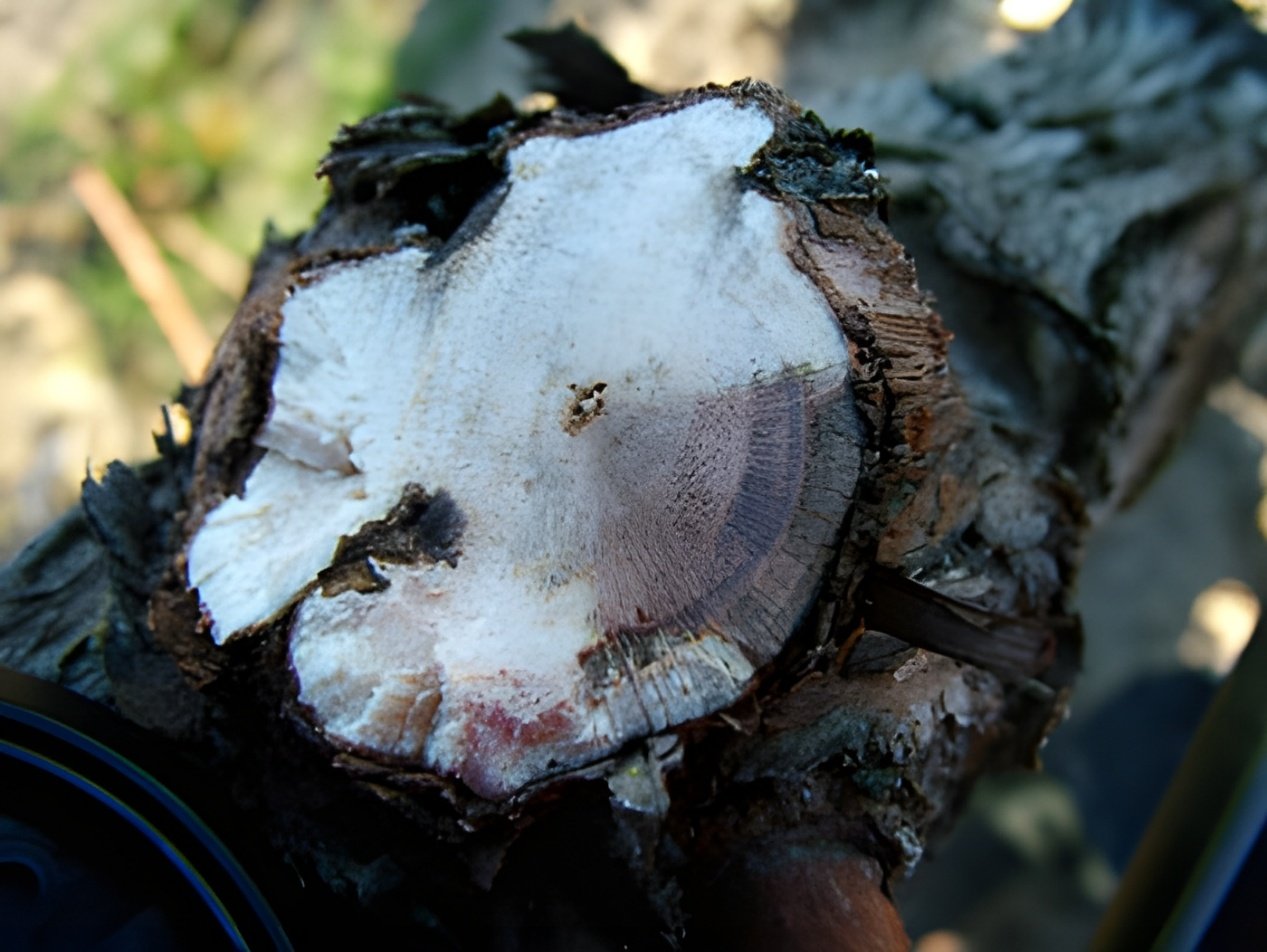
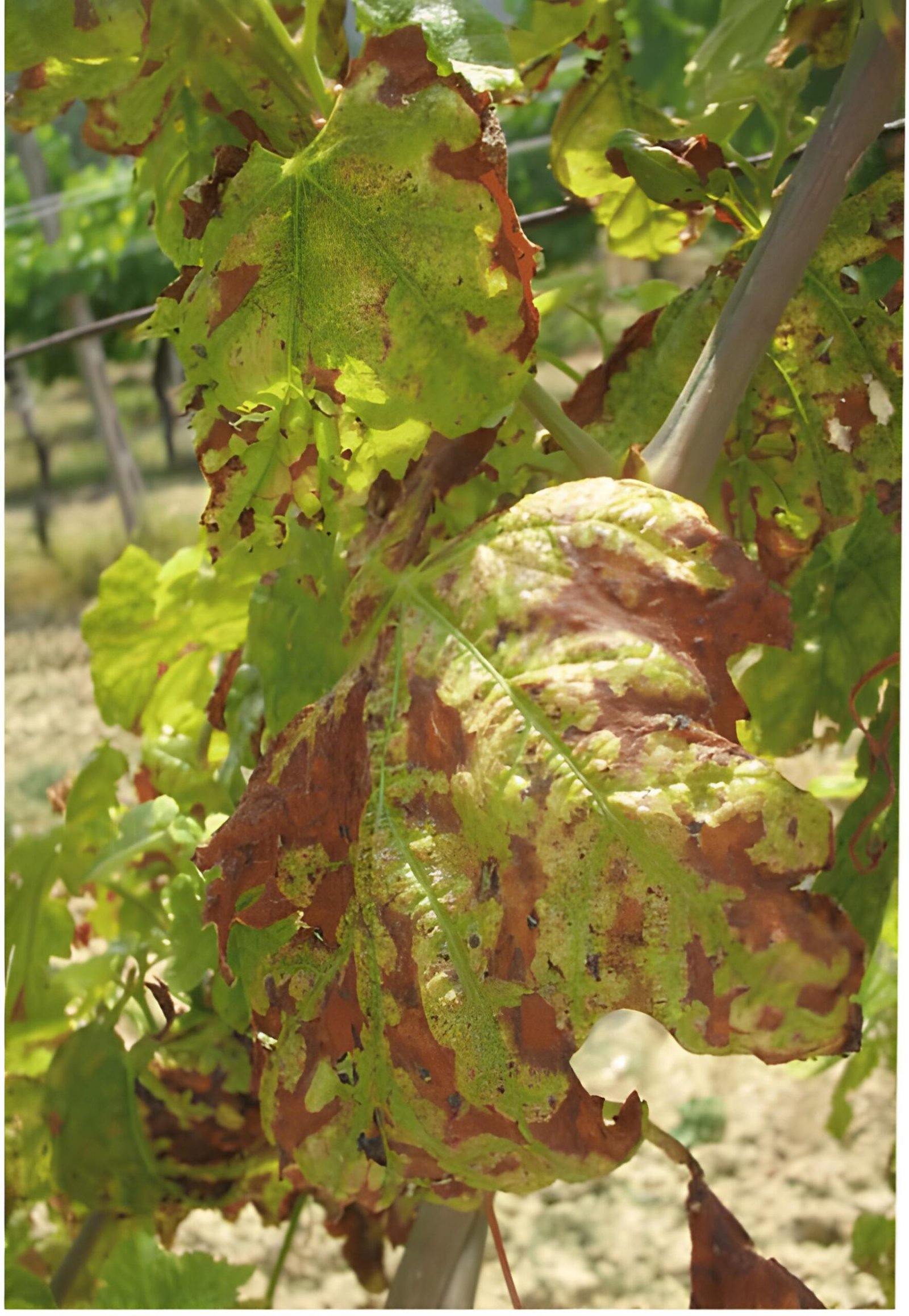
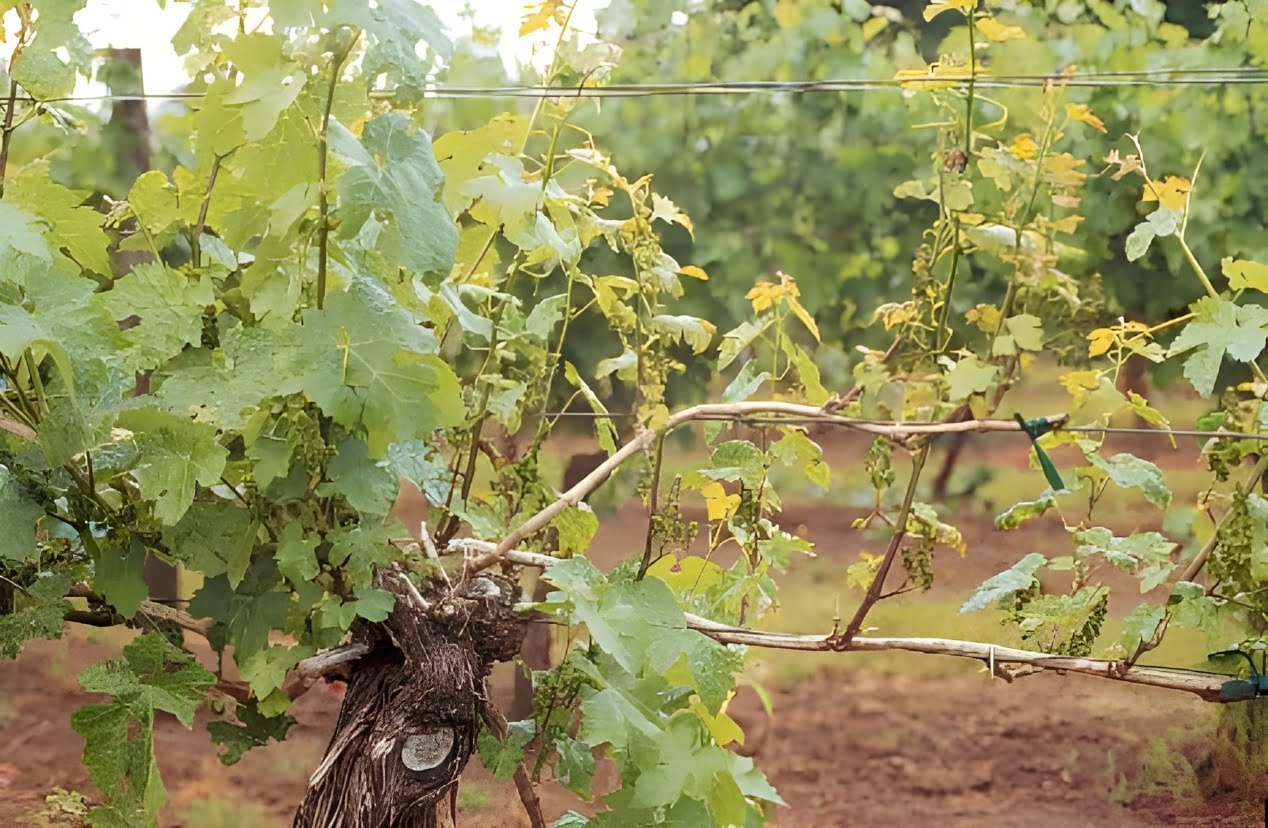
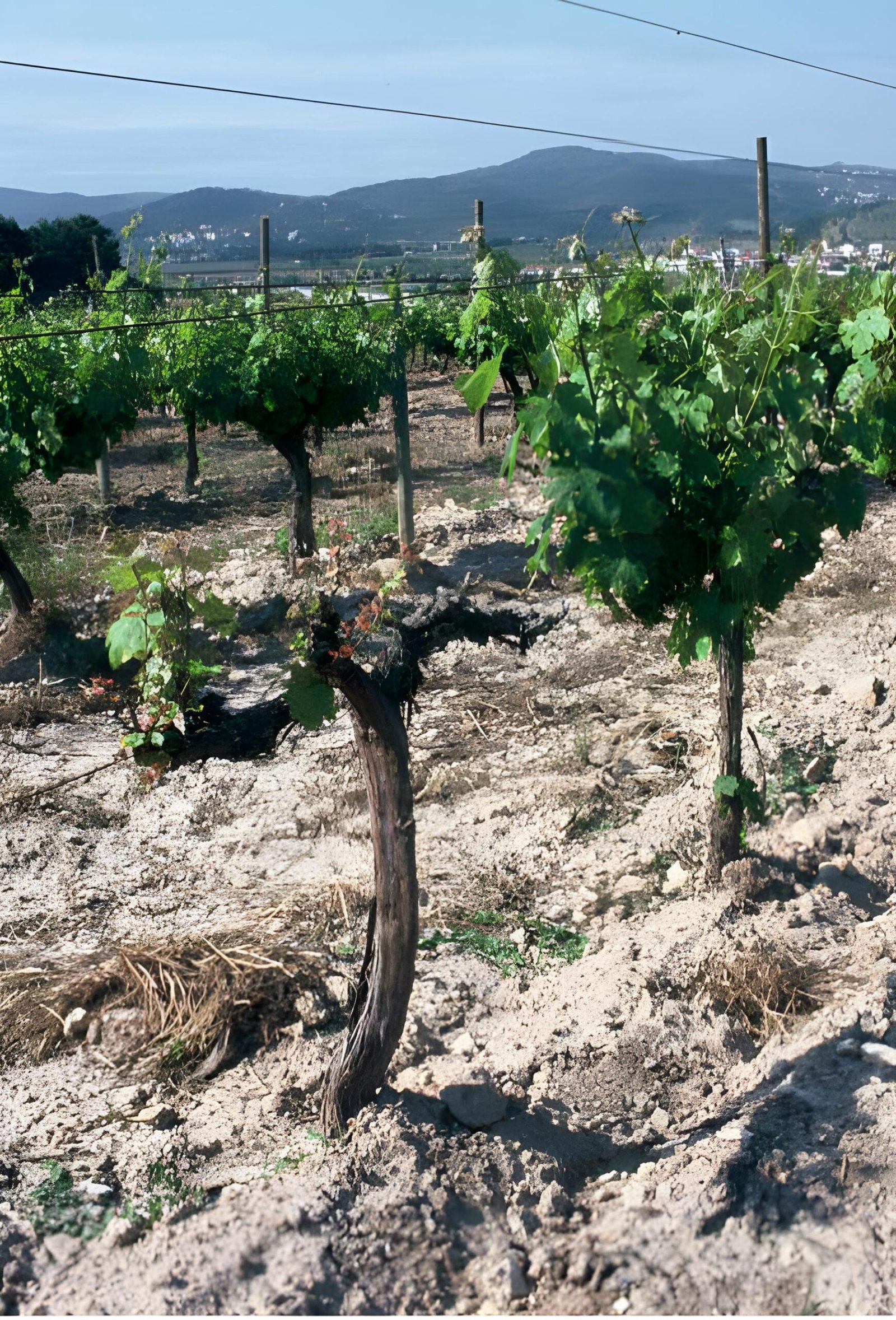
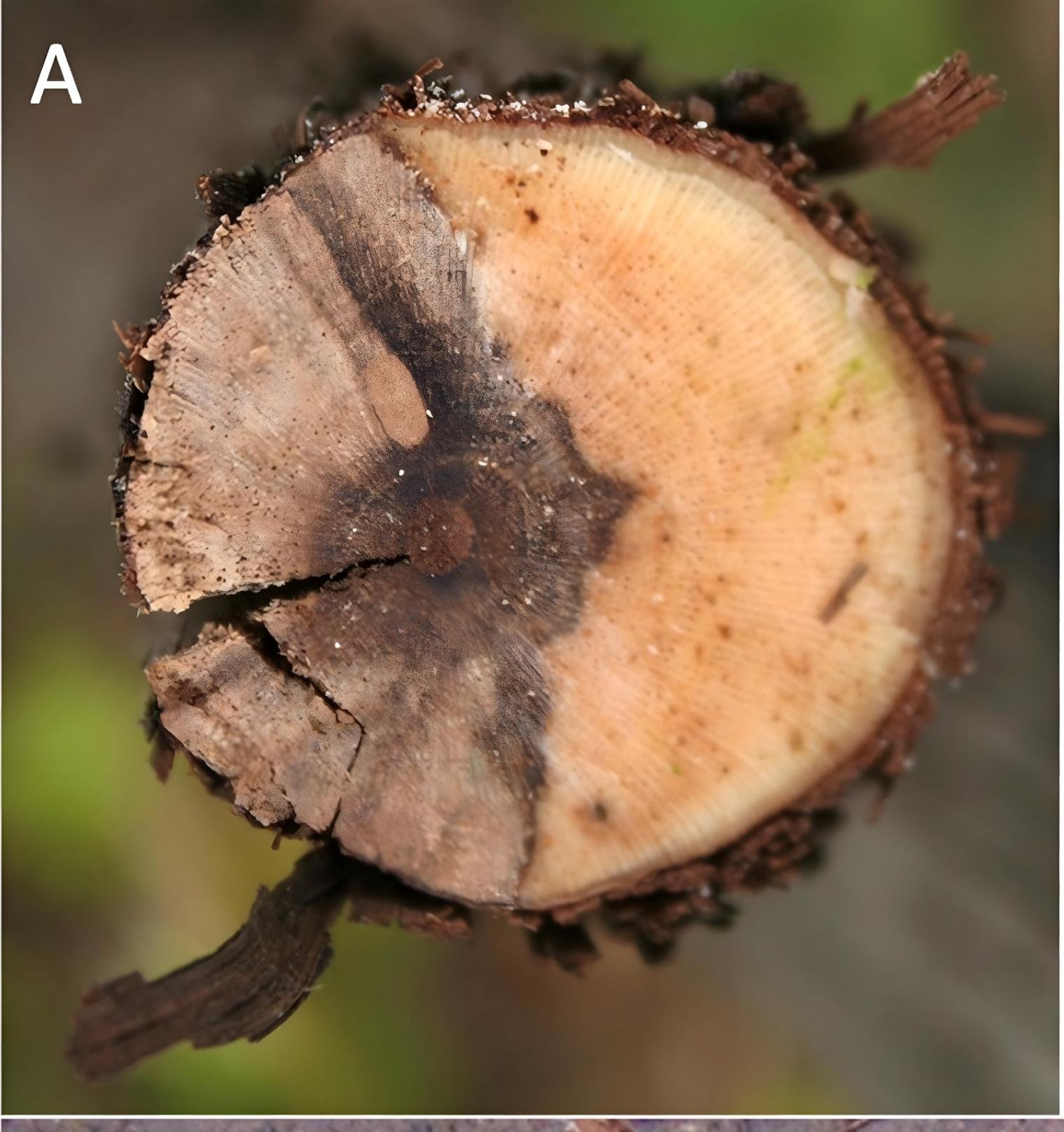
Causes of dieback on grapes
- In areas with high rainfall, or in spray irrigation conditions.
- Spores can spread the infection from an infected tree to nearby trees, or from other infected trees to healthy ones (the families of this fungus are apricots, cherries, almonds, apples, pears, walnuts, and olives).
- The fungus spreads mainly through water
- It enters through wounds resulting from pruning and plowing, and the fungus lives in the soil for a long time.
- The optimum temperature for disease development is 20-25°C.
Suitable conditions for the spread of dieback on grapes
- High water levels in the lands
- Do not place the drippers next to the bushes, which will lead to increased humidity
- Lack of potassium element
- Do not paint the pruning areas with a fungicidal disinfectant.
Development cycle of dieback on grapes
- The fungus forms ascospores on old infected tissue when high humidity is available.
- Spores are released from the fruit and carried by the wind. Infection occurs when they fall on fresh wounds resulting from the pruning process. This is the only known way for the disease to spread and infection to occur.
- The wounds become resistant to infection approximately 2-4 weeks after the pruning procedure.
Losses of dieback spread on grapes
- Fruits fail to form on infected branches, or they form in very small numbers.
- It causes the death of canes, supports, arms and trunks
- It may cause fruit rot in some grape growing areas.
Control strategy
Preventive measures to prevent the occurrence of the disease
- Prune late in the dormant phase to allow wounds resulting from the pruning process to heal quickly.
- Avoid pruning before or during rain, or during wet weather. It is preferable to perform it immediately after rain because the risk of infection is minimal, given that the spore load has been temporarily washed away.
- Remove infected trees and burn them.
- Good irrigation and drainage by improving the soil
- Good fertilization of trees.
Chemical and organic control recommendations
- Organic control
- Pruning wounds must be coated with grafting wax (paraffin wax) after sterilization
- When symptoms appear clearly during the spring, the affected branches must be marked to be removed during the dormant period, burned, and the ulcers removed, taking into account cutting under the ulceration area, and ensuring that no discoloration remains in the tissues.
- Chemical control:
- Although there are no registered pesticides for this disease, cutting sites can be sprayed immediately after pruning with thiophanate methyl.
- Bacteria (Bucillus subtilis) can be sprayed as a vital enemy, especially after the pruning process, to help inhibit the fungus and prevent its entry into the trees.
In conclusion, we would like to note that we, at the world of plants website, offer you all the necessary services in the world of plants, we provide all farmers and those interested in plants with three main services::-
- Artificial intelligence consulting service to help you identify diseases that affect plants and how to deal with them.
- Blog about plants, plant diseases and care of various crops ... You are currently browsing one of her articles right now.
- An application that provides agricultural consultations to clients, as well as a service for imaging diseases and knowing their treatment for free – Click to download the Android version from Google Play Store، Click to download the IOS version from the Apple App Store.
references:-
- Rolshausen, P. E., Mahoney, N. E., Molyneux, R. J., & Gubler, W. D. (2006). A reassessment of the species concept in Eutypa lata, the causal agent of Eutypa dieback of grapevine. Phytopathology, 96(4), 369-377
- Trouillas, F. P., & Gubler, W. D. (2004). Identification and characterization of Eutypa leptoplaca, a new pathogen of grapevine in Northern California. Mycological research, 108(10), 1195-1204
- Sosnowski, M. R., Ayres, M. R., McCarthy, M. G., & Scott, E. S. (2022). Winegrape cultivars (Vitis vinifera) vary in susceptibility to the grapevine trunk pathogens Eutypa lata and Diplodia seriata. Australian Journal of Grape and Wine Research, 28(1), 166-174
- A Reassessment of the Species Concept in Eutypa lata, the Causal Agent of Eutypa Dieback of Grapevine – The American Phytopathological Society
- Identification and characterization of Eutypa leptoplaca, a new pathogen of grapevine in Northern California – cambridge
- Winegrape cultivars (Vitis vinifera) vary in susceptibility to the grapevine trunk pathogens Eutypa lata and Diplodia seriata – WILEY ONLINE LIBRARY
.




